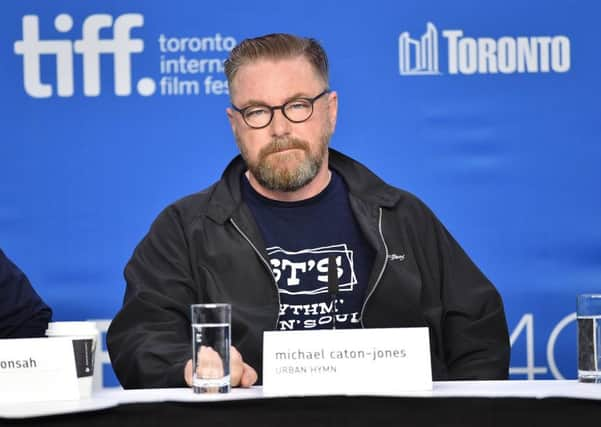Interview: Rob Roy director Michael Caton-Jones on new film Urban Hymn


“The reaction I couldn’t care less about,” he says of the drubbing his belated sequel to the erotic thriller starring Sharon Stone received on its release in 2006. “It was the experience of making it: it was horrible. And I knew before I started that it wasn’t going to be a particularly good film. Which is a very, very painful thing.”
So why do it? Having had a good run with the studios in the 1990s, he’d grown sick of all the “Hollywood bullshit” and was trying to get back to making more meaningful films. Trouble is, the industry had changed too much, so when he went off to Rwanda in 2004 to make Shooting Dogs, a drama about the 1994 genocide, he had to do it for virtually no money.
Advertisement
Hide Ad“I had a young child and rent to pay and I went off for to Rwanda for six months. I was completely broke and had to take anything that came in. Basic Instinct 2 was this poisoned chalice that had been passed around and eventually it arrived at my door.”
He’s not looking for sympathy here. As miserable as it made him, he can’t look down on the film too much because of the freedom it subsequently bought him. “I pay the rent by making television now, which is fine, but I decided I wasn’t going to make a feature film again until I liked the material and felt I could enjoy the process. Which is what happened with this one.”
He’s referring to Urban Hymn, a modest musical-inflected drama set in the aftermath of the 2011 London riots. It stars Shirley Henderson, with whom he first worked on Rob Roy (she had one line). She plays an out-of-her-depth sociology lecturer who takes a job working with underprivileged kids and ends up bonding with Jamie (Letitia Wright), a talented 17-year-old singer who is about leave the care home and enter the real world with no real support – save for the disruptive influence of her possessive and violent best friend Leanne (Isabella Laughland).
“What really attracted me was this idea that you can make a film with a more serious undertow that’s recognisable to the people who are watching it, but can still be entertaining.”
In this respect Urban Hymn stands in contrast to a lot of British social realist dramas, which drain any joy out of their characters’ lives. “That’s something I felt quite strongly about,” says Caton-Jones, who grew up on a council estate in Broxburn, near Edinburgh, and spent time living in squats in London. “These types of films can be so po-faced and miserable and reductive to an issue. I felt there was no need to be like that. You can make a serious point, but your job is to tell a story and entertain an audience. I wanted to do a musical, but not a Hollywood musical. I still feel quite strongly that filmmakers should be trying to inform and entertain. And that you can do that without superheroes.”
Caton-Jones is disparaging of mainstream cinema’s current obsession with superheroes. Though under no illusion that his own Hollywood CV is comprised of artistic masterpieces, he reckons audiences for drama have deserted cinemas for cable and Netflix. “That’s where it’s exciting. I think Hollywood is f***ed as far as film is concerned. I really think they’ve screwed it up.”
Advertisement
Hide AdHe first went out there after breaking through with Scandal, back when it wasn’t all that fashionable to be a director. “It’s a style job for a lot of people now,” he smirks. He didn’t have any great plan to crack America; he just wanted to make films, which no-one was really doing in the UK in the late 1980s and early 1990s.
When he first came back, it was to Scotland, with studio backing to make Rob Roy – a film that may have been overwhelmed by the subsequent success of Braveheart the same year, but which holds up now as the better movie. “I feel that myself,” he says with a laugh.
Advertisement
Hide AdWas there much rivalry with Mel Gibson’s production? “I had hoped they’d be a bit more gracious about the fact that there were two films going on in Fort William at the same time. They weren’t really. They were kind of competitive in that Hollywood way. I knew the countryside and I knew they were building sets in a place where they would get wiped out with the first rain. I could have told them that if they’d asked, but they didn’t.”
Caton-Jones’s disillusionment with Hollywood kicked in after he got close to the top and found his European sensibility wasn’t going to be encouraged. He realised he had to make a choice: take the money or get out of there. Having said that, he got the best of both worlds early on with 1993’s This Boy’s Life. Though the film allowed him to work with Robert De Niro for the first time (they worked together again on 2002’s City By The Sea), it’s more notable now for providing DiCarprio with his first starring role.
“I thought he was a terrific young actor,” says Caton-Jones. “He was raw and needed handling, but he was great. One of the things I’m most proud of was that I gave him good habits. He was at the point in his career where he needed someone to slap him around a bit and say, ‘Look, take this seriously you little shitbag or else there won’t be an episode two’. He’s said a lot of times since then that’s the best thing that could have happened to him.”
Urban Hymn is in cinemas now